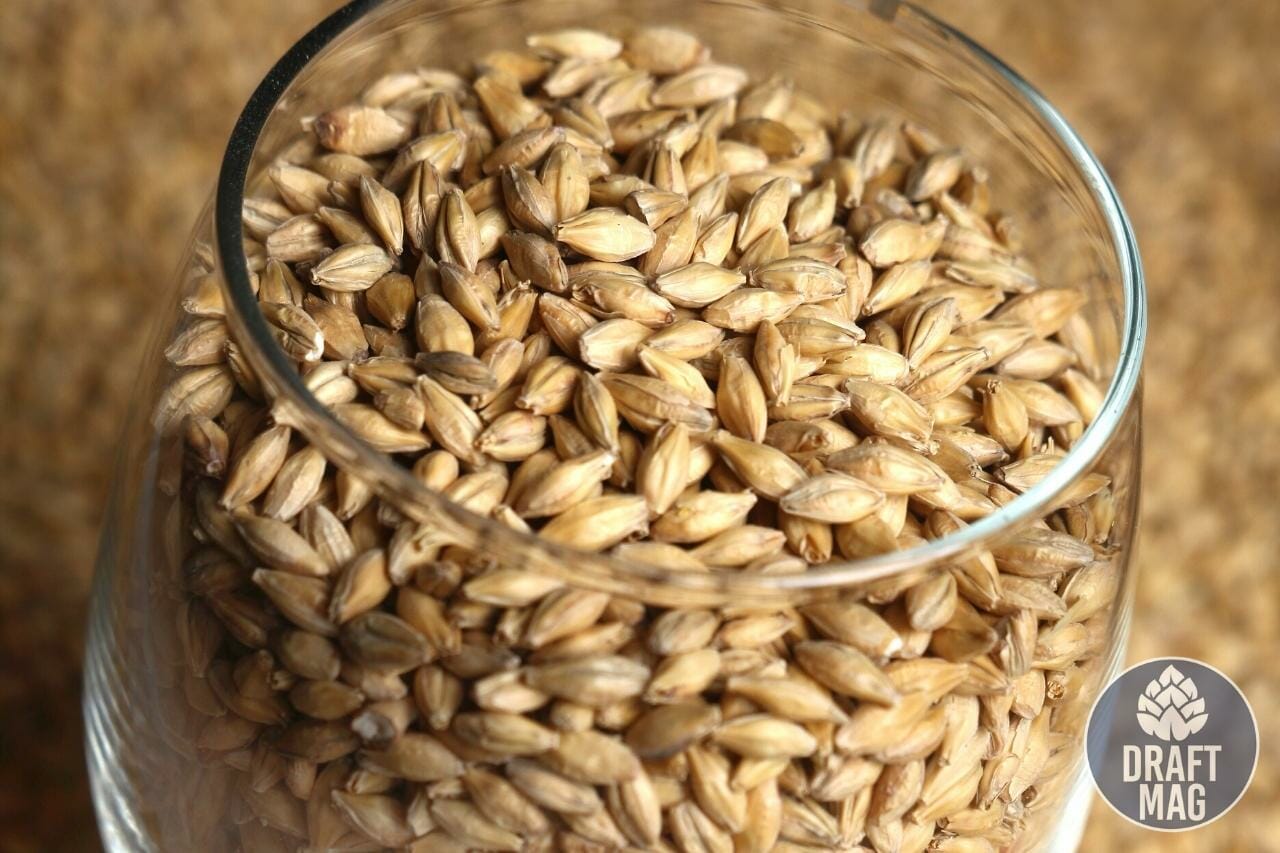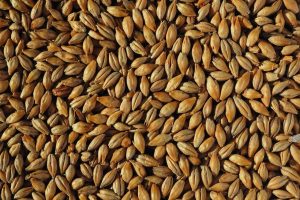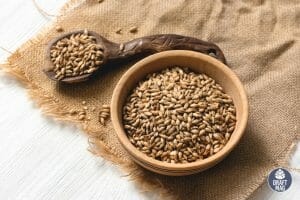What Does Malt Taste Like — The Ingredient That Improves Your Beer
 “What does malt taste like?” is a common question that many beer lovers ponder upon. Malt, the simple derivative from barley, rye, wheat or other grains, happens to be a key ingredient in beers. The type and quantity of malt used in a beer directly impact its taste and flavor, which is why malt is crucial in the brewing process.
“What does malt taste like?” is a common question that many beer lovers ponder upon. Malt, the simple derivative from barley, rye, wheat or other grains, happens to be a key ingredient in beers. The type and quantity of malt used in a beer directly impact its taste and flavor, which is why malt is crucial in the brewing process.
Read this article to know the detailed taste profile of various malts.
What Does Malt Taste Like?
The taste of malt is rather complicated — a mix of sweetness and nuttiness, potentially with caramel, toffee or toasted flavors. The malts used in beers are a mix of various ingredients. This is why one might find it a little hard to specify the taste of malt.
Malt offers an aggregate of different flavors, all of which add to the taste and aroma of the beer. In general, good malts have a nice balance between sweet and nutty tastes on the surface. This is a commonality that you would find among almost every malt used in beers.
Besides the sweetness and the nutty flavor, malt may also carry a variety of other flavors, depending on its ingredients. These include the flavors of coffee beans, caramel, chocolate, freshly toasted bread, etc. The taste of the malt in a beer varies proportionately with the strength of the beer. In lighter beers, the malt usually adds a fruity or tangy taste, with the tanginess often resulting from the yeast.
What Exactly Is Malt?
Malt is a result of the partial germination of food grains; known as malting, the process involves mobilizing enzymes, proteases and amylases in the grain due to exposure to moist air. Various cereals can undergo the malting process, such as barley, rye, and wheat grains. However, breweries generally use malt derived from barley to brew their beverages.
Malt is more than just an ingredient for beers. A product of different cereals, malt forms the base of various alcoholic beverages, including whiskey. In fact, even a number of everyday foods we consume, such as baked items, confectioneries, baby food, etc, contain malt in them. Hence, malt certainly isn’t an ingredient for beers alone.
Apart from beers, malts are used in various recipes such as a malted milkshakes or malted milk. Moreover, malt powder is also used in baking to cook the dough properly. Malt ice cream is yet another popular recipe that uses malts, and people who do not prefer the bitter taste of traditional vinegar use malt vinegar, which is sweeter and milder in taste.
How the Taste of Malt Varies With Its Strength
As you read earlier, the lighter a beer, the lighter the taste of the malt. Hence, if you are trying to identify malt in a beer, note that you should consider the beer’s alcohol content. With that being said, let us now look at the properties of malts used in different beers. We’ll go from the weakest malts to the strongest to make the changes easy to observe.
-
Wheat Beers
- Color: These beers use the weakest malts and are pale straw or golden in color.
- Taste: The weakest malts taste sweet and light, often similar to bananas.
- Flavor: You may notice a prominent tangy flavor added by the yeast.
-
Saison or Pale Ales
- Color: Using slightly stronger malts than wheat beers, these beers are amber in color.
- Taste: The sweetness of the malt becomes less prominent and the beers become hoppy with a slight bitterness.
- Flavor: These malts may add a fruity flavor, like grapes or lemons.
-
IPA or Amber Ale
- Color: These are moderately strong beers and usually have a copper or deep amber hue.
- Taste: A slightly sweet malt taste is noticeable in these beers.
- Flavor: You might find the flavor of caramel in beers that use moderately strong malts.
-
Brown Ale or Dunkel
- Color: These are the relatively stronger beers, usually deep brown in color.
- Taste: The taste of the malt becomes particularly prominent.
- Flavor: Often, the malt used in these beers adds a chocolate or coffee-like flavor.
-
Stouts and Porters
- Color: The strongest beers in the world, these are typically black or almost black in color.
- Taste: You would find the malt to have a sweet, roasted and potentially toasted taste.
- Flavor: These strong malts carry a flavor not very different from black coffee or dark toasted bread.
As you may observe, the malt becomes more prominent as the beers get stronger. While weaker malts used in the lighter beers taste fruitier, the more robust malts carry toasted and coffee flavors. Even for the beers that we did not list above, their colors should give you an idea of the strength of the malt used in them.
The Different Types of Malt
 The taste and flavor of a beer also depend on the type of grain used and the malt derived from it.
The taste and flavor of a beer also depend on the type of grain used and the malt derived from it.
Every brewery has a specific recipe, including one or more malt types.
Here are some of the common types of malt that you might find in your beer:
-
Crystal/Cara Malt
These malts tend to add caramel or toffee-like flavor to the beer, so if you smell either of these flavors in your beer, it probably contains crystal malts.
With that in mind, how does crystal or Cara malt differ from regular malt?
While barley is usually dried in a kiln, the process of making crystal malts involves mashing the grains in their husks. The starch is converted into sugar by stewing the mashed grains in warm water.
The caramel flavor in crystal malt results from the caramelization of sugars, which occurs while roasting the malt on a rotating drum. Crystal and Cara malts typically find their place in barley wines and imperial red ales. This is why these beverages are good choices for individuals who love toffee or caramel-flavored beers.
-
Smoked Malt
As the name indicates, this malt features a smoky taste that it adds to the beer. The exact malt flavor would depend on the fuel used in the smoking process. The production method is actually quite old and has been used in malt production since the pre-industrial revolution era. It requires drying the malt the old-fashioned way, using heat from peat or wood.
Fuels commonly used in smoking malt include Beechwood, Applewood and peat. As the malt fries in the heat, it gains the strong aroma of the smoke. In turn, the malt later transfers this aroma to the beer, giving it a smoky flavor. This is why breweries have to choose specific types of smoked malt, as it would directly affect the beer’s flavor.
-
Chocolate Malt
If your beer carries a chocolatey flavor, its ingredients likely include chocolate malt. Do note that chocolate malt doesn’t actually contain any chocolate or cocoa extracts. Instead, it gains a bitter taste similar to chocolate upon being roasted gently over a kiln. You could compare the flavor to that of coffee or cocoa powder.
You are most likely to find this malt in stouts and porters. Besides these, chocolate malt is also an essential ingredient for brown ales. This is why the strongest beers tend to be bitter and carry a coffee-like flavor.
-
Black Malt
The production process of black malt is similar to that of chocolate malt. However, the roasting occurs at higher temperatures, around 400 F. You would also have to roast the malt for longer to turn it into black malt. Patented in the early 1880s, black malt is present almost exclusively in the darkest beers out there.
Breweries use black malt primarily to darken their beer since black malt turns a beer black. However, it does have a distinct effect on the taste, imparting a burnt or ashy flavor. You would likely notice the presence of black malt yourself when you taste a beer that contains it.
-
Roasted Barley
Roasted barley isn’t actually a malt but still earns the title as it serves a similar purpose. To make this specialty grain, one must take raw and unmalted barley and roast it at temperatures even higher than what’s necessary for black malt. Like chocolate or black malt, you would find roasted barley primarily in strong stouts.
Guinness, the most famous Irish ale with worldwide popularity, contains roasted barley too.
Like black malt, roasted barley imparts a bitter, ashy and almost smoky flavor. While roasted barley shares several similarities with black malt, the latter is generally harsher. Black malt also tastes a little sweeter and more complex, which is why it has a strong effect on the beer’s flavor. Unlike black malt, roasted barley adds a slight, deep red color to the beer.
FAQ
Does Malt taste like chocolate?
No, malt does not taste like chocolate. It has a distinctive sweet and nutty flavor that is often described as caramel-like or toasty. Chocolate, on the other hand, is a sweet food made from roasted and ground cacao seeds, and has a distinct chocolate flavor that is not similar to the flavor of malt.
Can Malts be bitter?
Malts can be bitter depending on the degree of roasting.
What does Malted Wheat taste like?
Malted wheat has a distinct nutty, toasty flavor.
Endnote
 Here is a quick summary to help you remember the most relevant things from this guide and help you evaluate the taste of malt. Using this, you can choose the beer that you love.
Here is a quick summary to help you remember the most relevant things from this guide and help you evaluate the taste of malt. Using this, you can choose the beer that you love.
- The darker the beer you choose, the stronger the malt in it.
- Besides the sweetness and the nutty flavor, the taste of malt can vary greatly.
- Breweries use specialty malts to deliver specific tastes and flavors in their beers.
- The malt used in strong beers is a key reason behind their bitter flavors.
Hopefully, this article has answered all your questions regarding malts. The next time you go for a beer, you can choose a more suitable one for your tastes based on the malt it contains, but it is totally worth trying out beers that use different malts for individuals who love exploring various drinks.






